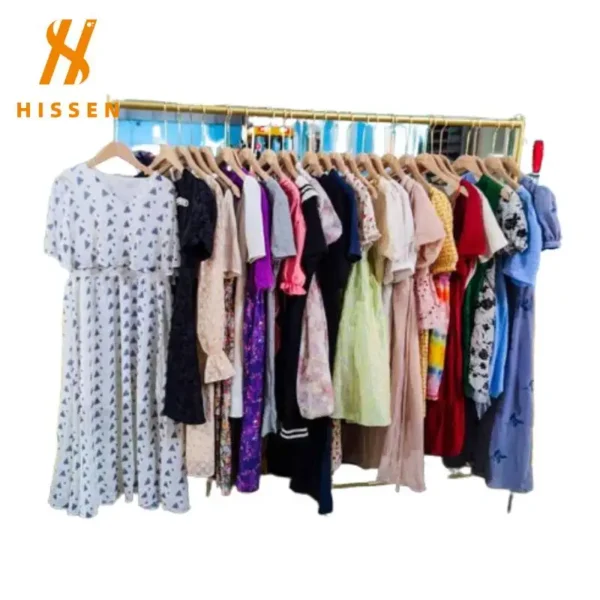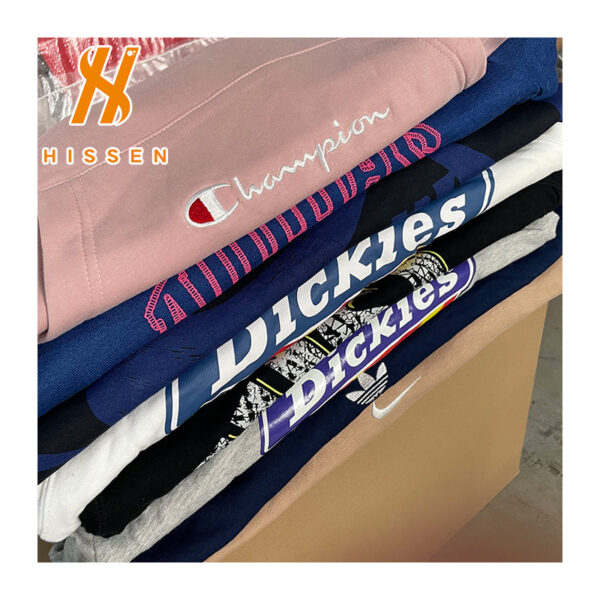Starting a business in branded second hand clothes wholesale can be surprisingly straightforward if you know where to look. Many shoppers now choose second hand branded clothes or preloved designer clothing. They want good quality without paying full price, and they like the idea of buying sustainably. This change in shopping habits opens up a real chance for entrepreneurs.
Compared with regular retail, selling branded second hand clothes wholesale usually costs less to start. You can find used name brand clothing, returned items, overstock, or even pre owned luxury clothing from trusted suppliers. Small business owners can then sell these items through online shops, local boutiques, or market stalls. With careful planning, it’s possible to turn a modest investment into a steady income.
Demand for high end branded second hand clothes is growing. Young buyers, eco-conscious shoppers, and fashion lovers all look for high end pre-owned designer clothes because they combine quality and value. Even name brand used clothes that used to be overlooked now sell quickly if marketed well.
If you plan to enter this market, focus first on finding reliable suppliers, checking quality, and setting prices that make sense. This guide will walk you through the essentials of running a branded second hand clothes wholesale business—from sourcing and logistics to selling and profit strategies—so you can start smart and grow steadily.
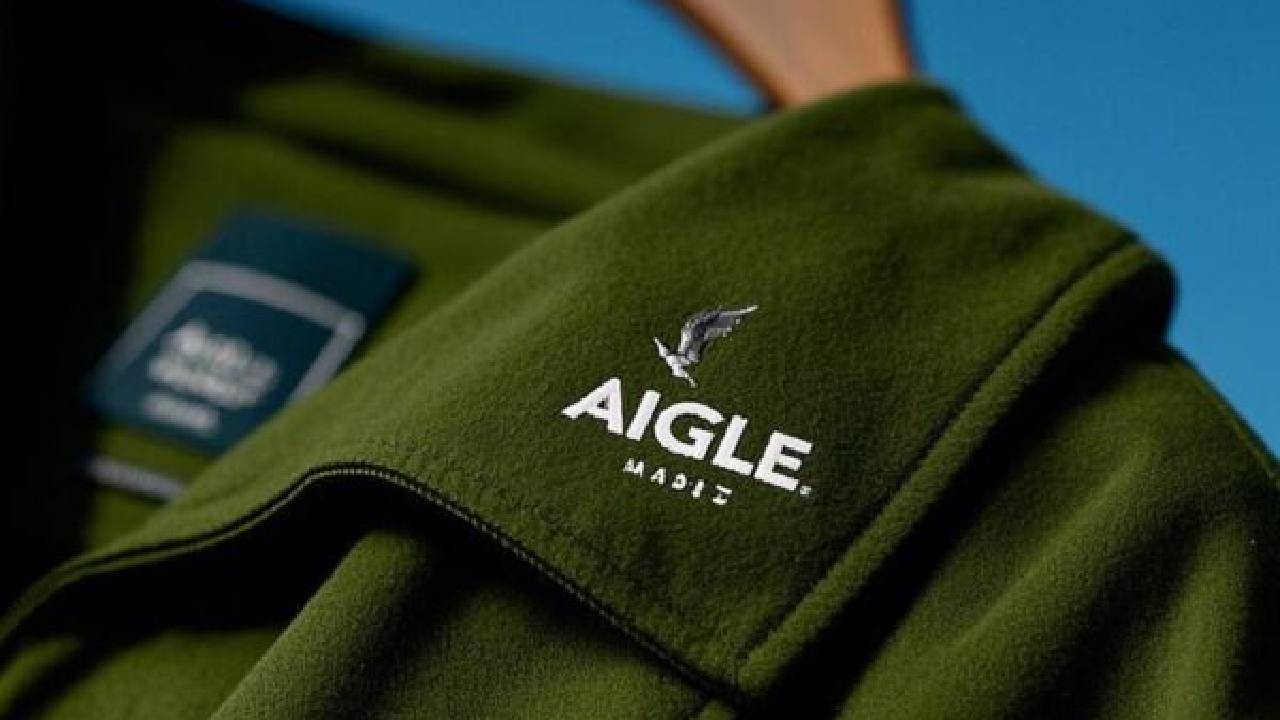
Researching the Market of Branded Second hand Clothes Wholesale
Before starting a branded second hand clothes wholesale business, understanding the market is essential. Without research, even the best supplier or sales plan may fail because you do not know who your buyers are or what they want. Market research helps you spot opportunities, avoid risks, and set realistic goals.
Points to cover in market research:
- Target customers: Are you aiming at thrift shop owners, boutique resellers, online sellers, or direct consumers? Each group has different needs.
- Product demand: Popular categories such as used women’s clothes wholesale or branded sportswear often sell faster. Seasonal changes also affect demand—winter coats sell well in colder months, while summer dresses move in warmer regions.
- Quality check: When buying branded second hand clothes wholesale, check each piece carefully. Make sure the clothing is genuine, clean, and in good condition. Many suppliers offer pre-packed bundles, which can save time, especially if you’re just starting. Sourcing apparel from a trustworthy branded second hand clothes supplier reduces problems later.
- Competitor analysis: Study how other wholesalers price and present their products. Look at their shipping policies, social media activity, and customer reviews. This shows where you can stand out, such as offering faster delivery or better quality control.
- Pricing expectations: Understand what buyers are willing to pay. In wholesale, margins are tighter, so knowing the acceptable range helps you stay competitive without cutting profits.
- Market channels: Online marketplaces, local flea markets, or partnerships with boutique shops all require different strategies. Some sellers focus on Instagram and TikTok to attract younger audiences, while others build long-term ties with small retailers.
- Geographic factors: Different regions favor different brands. For example, European buyers may prefer Zara or H&M, while African buyers might value durable clothes over brand recognition.
Good research not only shows where demand is strongest but also helps you plan your supply. If you know which categories sell best, you can negotiate better deals with suppliers and avoid stock that sits unsold.
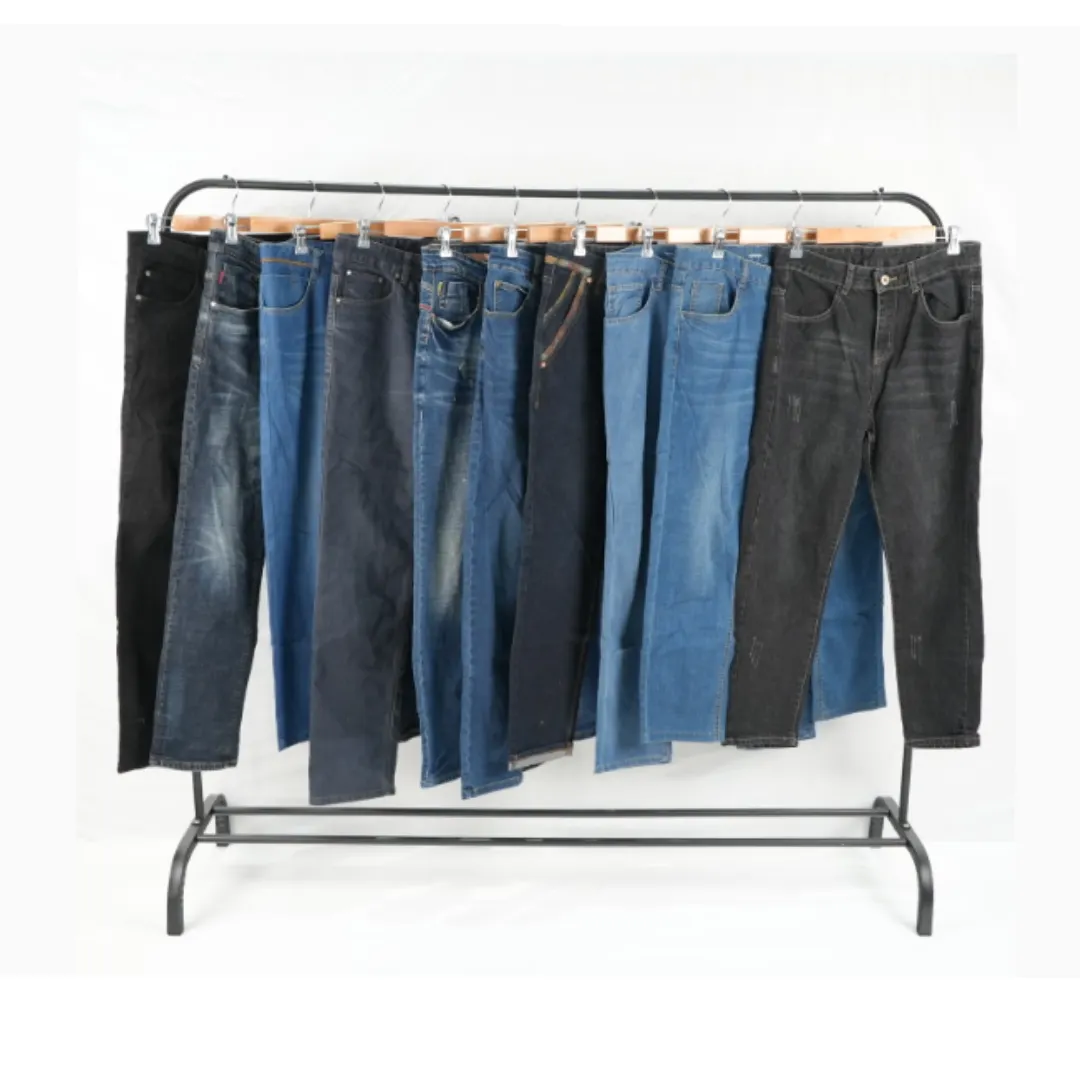
How to Choose Suppliers and Sourcing Locations
Finding a good supplier is one of the most important steps in starting a branded second hand clothes wholesale business. A reliable supplier provides authentic, quality clothing and delivers on time. Without this, even a solid sales plan can struggle. For more information about suppliers, you can check Where To Buy Used Clothes In Bulk.
You have several options:
- Local Suppliers – Thrift stores, clearance sales, or specialty wholesalers are easy to check and allow quick restocking.
- International Suppliers – Importing Amazon return containers or bulk lots from overseas can offer lower prices and access to harder-to-find brands. Keep in mind shipping costs and customs.
No matter which type you choose, verifying a supplier’s reputation is essential. Look for reviews, ask for references, or contact previous clients to confirm reliability. Many wholesalers also provide sample shipments for a small fee, allowing you to check quality before making a large investment. This is especially important if you deal with branded second hand clothes wholesale or pre owned luxury clothing.
Location plays a key role in shaping your business model. Local suppliers often mean lower transport costs and faster turnaround, which suits sellers targeting nearby boutiques, flea markets, or pop-up stores. International suppliers provide more variety and sometimes unique brands that stand out in competitive markets. The right choice depends on your sales channels—online sellers may benefit from international suppliers, while local shops may prefer nearby wholesalers.
Finally, diversification is one of the best strategies for stability. Relying on a single supplier can leave your business vulnerable to delays or sudden price increases. Building relationships with multiple sources reduces these risks and gives you leverage to negotiate better deals. A balanced mix of local and international partners makes your wholesale business more resilient and better positioned to meet customer demands.

Startup Costs and Logistics Considerations for a Branded Second Hand Clothes Wholesale Business
Before starting a branded second hand clothes wholesale business, it’s crucial to understand your costs and plan logistics carefully. Inventory is usually the biggest expense. Buying used clothes in bulk, whether from local suppliers or importing Amazon return containers, requires upfront investment. Smaller lots can reduce risk if you are just starting.
Detailed Cost Breakdown
- Inventory Costs – The price depends on brand, condition, and quantity. High-demand items like popular designer brands cost more but can sell faster.
- Storage Costs – Renting warehouse space or storage units is essential to keep your stock safe and organized. The cost varies by location and size.
- Packaging Materials – Boxes, polybags, labels, and protective wrapping add to the budget. Investing in quality packaging can reduce damaged items and improve customer satisfaction.
- Shipping and Transportation – Local delivery is cheaper and faster, but international shipping requires customs handling, duties, and longer lead times. Plan carefully if importing from overseas.
- Operational Tools – Inventory management software, barcode scanners, scales, and labeling systems help you track stock efficiently. Even small startups benefit from basic tools.
- Business Registration and Insurance – Legal permits, business registration, and insurance are necessary in many regions. They protect your business and create credibility with buyers.
Logistics Planning Tips
- Organize Inventory – Sort stock by brand, category, season, or size. This makes order fulfillment faster and reduces errors.
- Track Stock – Keep simple spreadsheets or use free inventory apps if your budget is tight. Always update after sales or restocking.
- Optimize Shipping – For online sales, choose reliable carriers and include tracking. For local distribution, consider a courier that allows same-day or next-day delivery.
- Restock Strategically – Monitor sales trends to avoid overstocking slow-moving items or running out of hot sellers.

Example Scenario
Imagine you start with $5,000 for a branded second hand clothes wholesale business:
- $3,000 on bulk inventory: Purchase a mix of high-demand items from suppliers, including popular branded women’s and men’s clothing. Focus on quality pieces that can be sold individually or in smaller lots. Consider starting with around 500–700 items to test which categories sell fastest.
- $800 for storage and shelving: Rent a small storage unit or organize a dedicated space at home. Invest in sturdy shelves, bins, and garment racks to keep clothes organized by size, season, or brand. Proper organization saves time when fulfilling orders and reduces damage.
- $500 for shipping and packaging materials: Include boxes, polybags, tape, labels, and protective wrapping. Factor in shipping costs for both local deliveries and any online orders. Quality packaging ensures clothes arrive in good condition, which builds buyer trust.
- $700 for software, business registration, and insurance: Use part of this for basic inventory management software or spreadsheets, register your business legally, and purchase insurance if required. These steps protect your operation and create credibility with suppliers and buyers.
With careful planning, this budget allows you to test the market while maintaining flexibility to scale.
By understanding startup costs and planning logistics upfront, even a modestly funded business can operate efficiently and grow steadily. Proper preparation reduces mistakes and ensures your branded second hand clothes wholesale venture is ready for the challenges ahead.
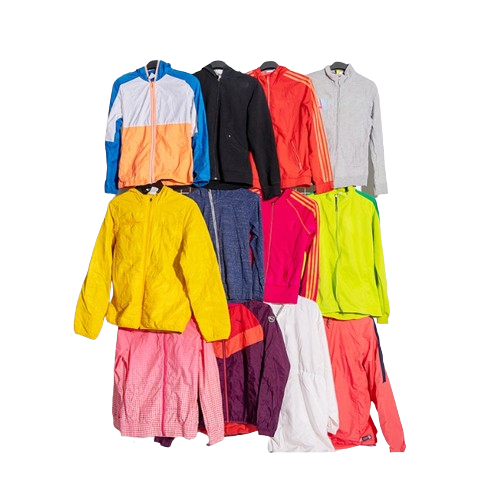
Profit Models of a Branded Second Hand Clothes Wholesale Business
Once your supply chain and logistics are in place, the next step is figuring out how to generate revenue from a branded second hand clothes wholesale business. Profit models vary depending on customer type, sales channels, and scale, but the core is finding the right balance between pricing, volume, and brand positioning.
Common profit approaches include:
- Markup on wholesale lots: Many wholesalers buy bulk shipments and resell them in smaller lots to boutique owners, flea market sellers, or online resellers. For example, purchasing at $2 per item and reselling at $5 doubles your investment. This model works best when turnover is quick.
- Retail resale of premium pieces: Buy in bulk and sell items individually. This works well online, at local markets, or in small boutiques. For example, you might focus on used women’s clothes wholesale for fashion-conscious shoppers. Popular brands and seasonal items often sell faster and earn higher margins.
- Subscription or mystery boxes: A creative method is offering subscription boxes or “mystery bundles,” such as $50 for 10 branded items. This surprise factor appeals to younger shoppers and saves you time on item-by-item listings.
- Partnerships with retailers: Buy in bulk and sell to other retailers. Many small shops prefer this because it saves time and effort. You could focus on used men’s clothes wholesale or specific brands. Providing consistent quality and reliable delivery helps you build long-term buyers.
Key factors that influence profitability of a branded second hand clothes wholesale business are:
- Quality of inventory, since well-preserved branded items sell faster and at higher prices.
- Brand recognition, with popular names like Nike or Zara moving quickly, while luxury labels demand authentication but bring stronger margins.
- Sales channels, as online platforms reach wider audiences but involve fees, while offline channels have lower costs but limited scale.
- Volume versus margin, where you must decide between fast turnover with lower profits or slower sales with premium pricing.
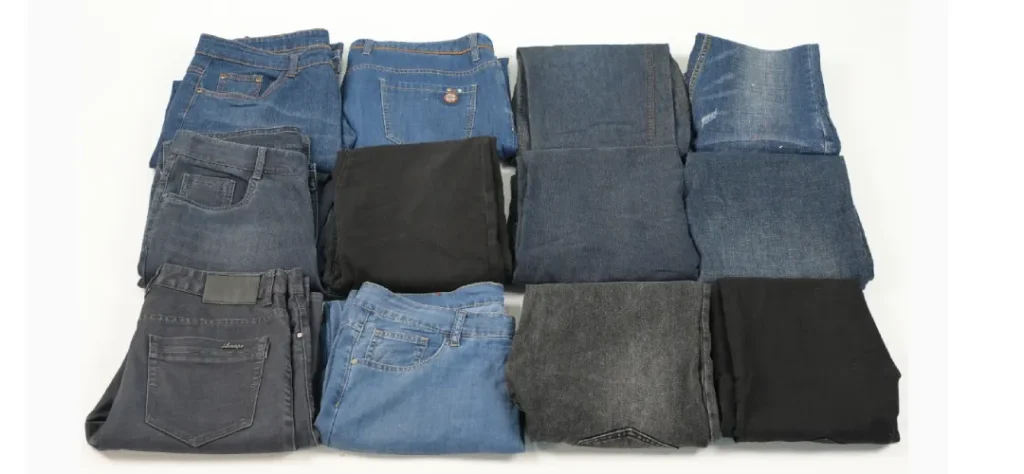
Operational Challenges and Solutions of a Branded Second Hand Clothes Wholesale Business
Running a branded second hand clothes wholesale business can be tricky at times. One big challenge is keeping quality high. Customers expect clean, genuine items. Check each piece before shipping to avoid complaints.
Fake or misrepresented products are another issue. Some clothes might look like used Zara wholesale but aren’t real. Always verify suppliers and inspect stock carefully. This protects your reputation and keeps buyers coming back.
Managing inventory is often hard too. You need to know what’s in stock, what’s selling fast, and what’s moving slowly. Simple spreadsheets or basic inventory software can help. Sorting items by brand, season, or type makes it easier to find what you need.
Shipping can also cause problems. Late deliveries or damaged items frustrate customers. Pack clothes carefully and use reliable carriers. If you sell both locally and online, balance speed with cost.
Market demand can change. Some brands or seasonal items sell quickly, while others take longer. Watch trends and adjust your stock. Being flexible helps your branded second hand clothes wholesale business stay steady and reliable.

Conclusion
Starting a branded second hand clothes wholesale business can be a rewarding venture if you plan carefully. The market is growing, and more people are looking for second hand brand clothes that are stylish and affordable.
Success depends on several key factors. Finding reliable suppliers is crucial. You also need to manage inventory well, control costs, and handle logistics efficiently. Offering quality items, whether it’s branded second hand clothes wholesale or used summer clothes wholesale, helps you build trust with customers.
Being flexible matters too. Trends change, and certain brands or seasonal items sell faster than others. Watching the market and adjusting your stock keeps your business competitive. Small improvements like proper packaging, cleaning, or minor repairs can make your products more appealing and increase profit.
With careful planning, attention to detail, and reliable partners, you can run a profitable branded second hand clothes wholesale business. This is a market where both beginners and experienced entrepreneurs can grow steadily and build a loyal customer base.

